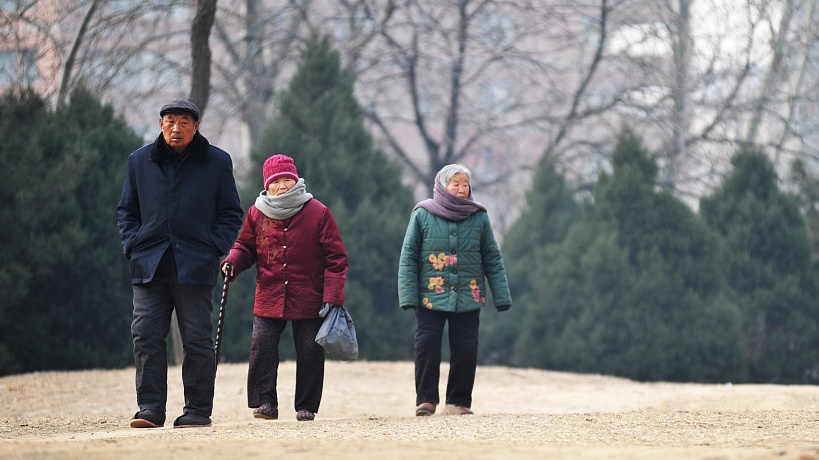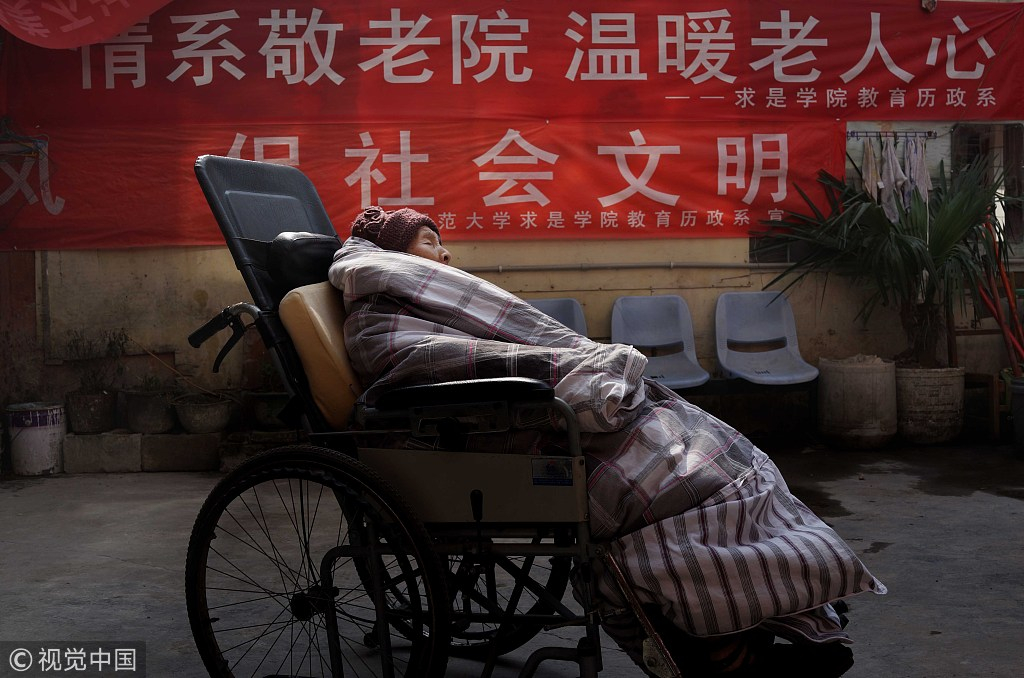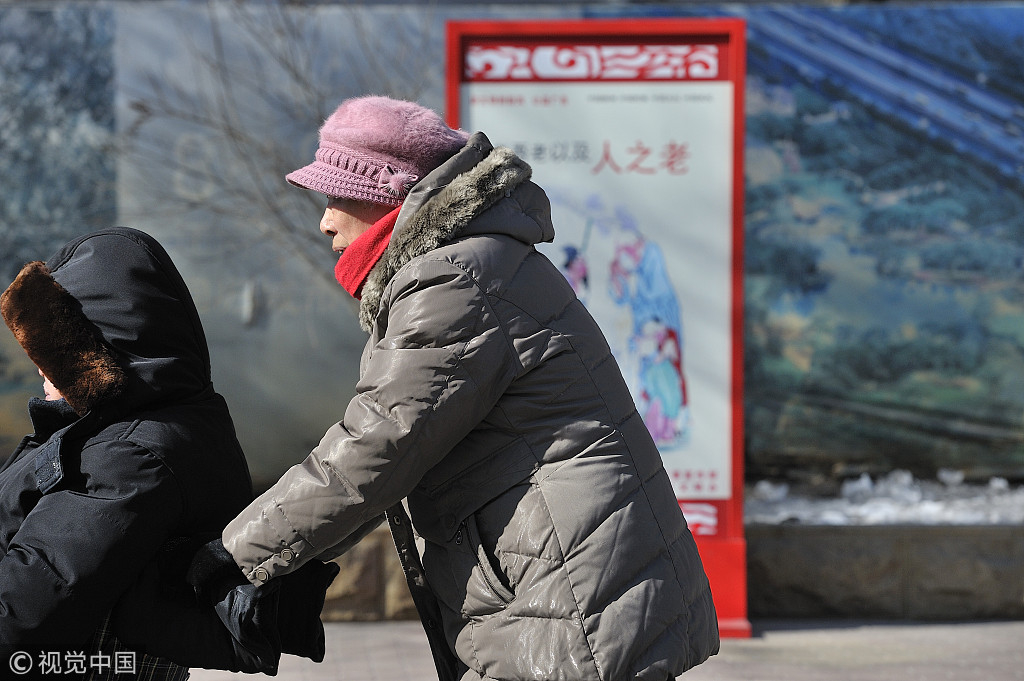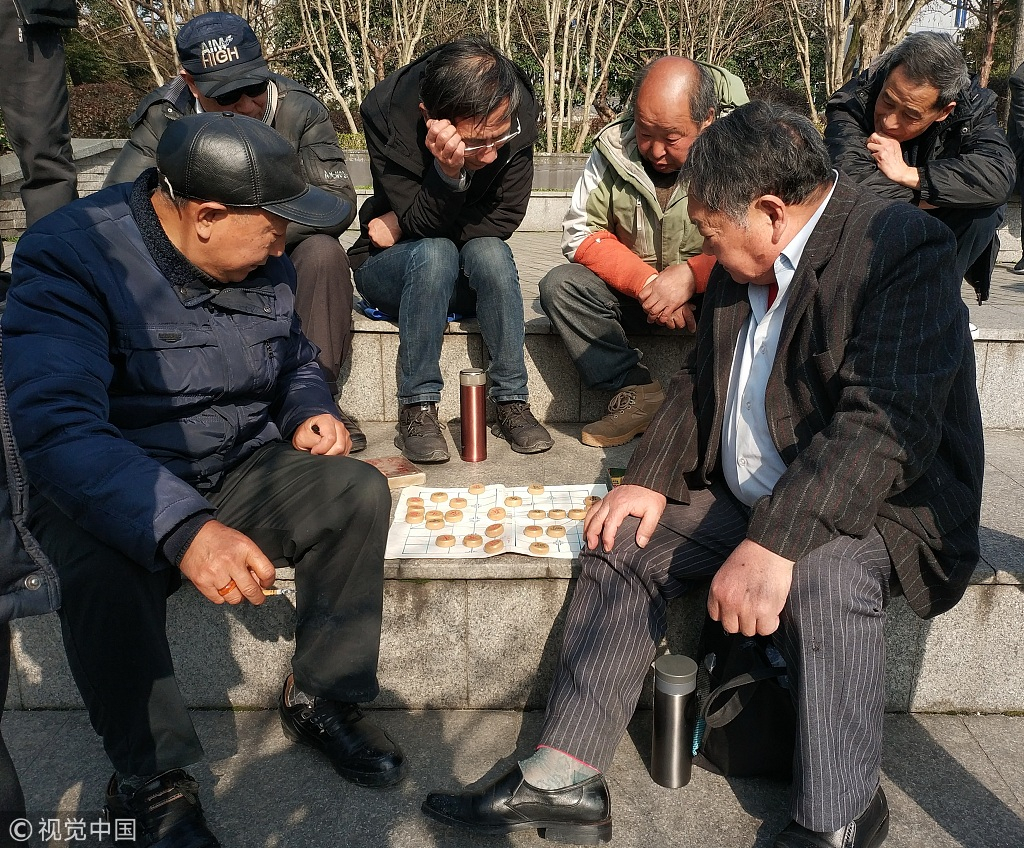
Domestic
10:04, 15-Mar-2019
China takes moves to try to avoid pensions crisis
Updated
15:19, 15-Mar-2019
By Yu Jing

Liu Qiang has been running a leather-manufacturing factory in the Chinese port city of Tianjin for 20 years. At the end of 2018, the 50-year-old thought his career was coming to an end.
Each month, he pays 19 percent of his employees' salary to collective pension pools run by local governments. The lion share of his factory's orders used to come from Guangdong where bags and shoes factories cluster. But in 2018, one of his biggest customers, Adidas, moved its factory to Vietnam and with orders on the decline, Liu could barely make ends meet.
As labor costs in China increase, so does the premium required for corporations to submit to the pension pool. To address the heavy economic burden on small enterprises like Liu Qiang's factory, the state is taking action.
Lifting the burden on small enterprises
During this year's Two Sessions, Chinese Premier Li Keqiang vowed to reduce the burden on employers from social insurance, announcing a reduction in the percentage corporations pay to the pension pool from 19 percent to 16 percent.

Elders wait in line to collect pensions in Haikou, January 16, 2015. /VCG Photo
Elders wait in line to collect pensions in Haikou, January 16, 2015. /VCG Photo
The announcement brings a sigh of relief to many smaller enterprises. For years, the high employer-side payroll for pensions has squeezed their dwindling profit margins.
Liu Qiang's leather-manufacturing factory, though gradually embracing automation, is still labor-intensive at its core. It relies on workers to sift through raw leather, find the higher-quality material and match with the right color.
"China's greatest advantage still lies in its large labor force," Liu Qiang said, looking back over his 20 years of entrepreneurship. "There are many tasks where there is no set standard and human judgement thus becomes essential."
The downgrade in the employer-side payroll for pension is aimed at decreasing the burden on companies and revitalizing the market, said Zhang Yinghua, a researcher on pension systems at the Chinese Academy of Social Sciences (CASS).
It also suggests that policymakers have prioritized employment opportunities ahead of other economic development goals, as Premier Li vows to create another 11 million new jobs this year, Zhang Yinghua added.

An elderly woman rests under the sun in Guiyang, January 27, 2013. /VCG Photo
An elderly woman rests under the sun in Guiyang, January 27, 2013. /VCG Photo
A planned cut of nearly two trillion yuan (298.3 billion U.S. dollars) in taxes and fees for companies was also promised at the Two Sessions. The value-added tax rate for manufacturers will be reduced from 16 percent to 13 percent in 2019.
"It means for every box of leather, the cost will drop from the current level of 32,000 yuan (4,764 U.S. dollars) to 28,000 yuan (4,168 U.S. dollars)– a 6,000 yuan (893 U.S. dollars) in savings, which is a huge relief of the burden for smaller enterprises like mine," Liu Qiang said.
Concern over increased pension deficit
As news went round that the government is bringing down pension premium rates for corporations, many expressed concern that it will exacerbate the shortfall in China's pension funds.
In 2016, 13 pension funds in regions and administrative units around China didn't have enough money to pay a whole year's worth of pensions. Heilongjiang, a province in Northeast China, has been borrowing from the central government's social security fund since that year.
The shortfall in the national pension system stems from the historic context of reform in China's state-owned enterprises. Before China's market reform in the 1990s, government employees and employees of government-affiliated institutions did not pay into pensions during their working years, but their old-age care was nonetheless secured since they had an "iron rice bowl" job.
After China introduced market reforms, millions were laid off from money-losing state enterprises in the 1990s, but they are still eligible for "legacy pensions." As a result, contributions by younger generation of workers go primarily to pay for the pensions of the older generation.
Guo Zhiyang, a retired factory worker from Heilongjiang, recounted that his contribution to the pension pool increased with the rise in his salary.
"Initially at a salary of around 100 yuan (14.89 U.S. dollars) per month, I did not pay anything to the pension fund. As my salary went up to around 1,000 yuan (148.87 U.S. dollars), I started to pay around 100 yuan."

Women exercise at An Yang park in Harbin, February 27, 2018. /VCG Photo
Women exercise at An Yang park in Harbin, February 27, 2018. /VCG Photo
But rapid aging and a heavy population outflow make the model unsustainable. In 2030, the population in China is expected to start shrinking and by 2020, fewer than two workers are expected to support one retiree in the country.
Since the pension fund is financed and managed by the local city or provincial government, the financial woe is particularly painful in some areas. While prosperous southern Guangdong Province has more than 700 billion (104 billion U.S. dollars) surplus in its pension fund in 2016, Heilongjiang, plagued by a shrinking workforce, has a deficit of 23.2 billion (3.45 billion U.S. dollars) yuan in the same year.
According to Zhang Yinghua, a researcher at CASS, 11 to 12 provinces and autonomous regions suffer from pension deficits at present. In 10 years, as the nation ages, that number is likely to increase to around 18 to 19.
Models to deal with pension shortage
Many elders in China are now seeking alternative ways to prepare for retirement. Guo Zhiyang now spends most of his time analyzing the stock market. Investment returns he got from the market far outweighs the meager 2,000-yuan (297 U.S. dollars) monthly pension he received from the collective pension pool.
Despite the difficulties, a pension crisis is unlikely to happen, said Zhang Yinghua on an optimistic note.
To tackle the pension shortfall, since 2017, the state mandates a handful of state-owned enterprises to transfer 10 percent of their state-owned equity to the pension pool. Zhang made the calculation that it would amount to around four trillion yuan of support to the collective pension pool.
The other way is to further strengthen China's National Council for Social Security Fund, a strategic reserve fund established in 2000 to serve as a last resort to support provinces with pension shortfalls.
By the end of 2017, the total asset of the National Council for Social Security Fund reached 1.8 trillion yuan (268 billion U.S. dollars).

Elders play Chinese chess at a park in Shanghai. /VCG Photo
Elders play Chinese chess at a park in Shanghai. /VCG Photo
Earlier this year, a proposal suggesting the surplus pension funds in southern Guangdong Province should be used to alleviate the pension shortfall in northeastern Heilongjiang Province provoked a national debate. It is feared that the diversion of funds would face resistance from wealthier provinces and would undermine people's incentive to contribute to their pensions.
"As labor flows freely across the country, pension funds should not be stuck in the original place," Zhang said. She said the government's decision to pull money from provincial-level pension funds to create a national pool in 2018 is a step in the right direction.
"Social security is the responsibility of the entire society and every citizen is entitled to social security, no matter where they come from," she stressed.
Factory owner Liu Qiang feels the same. Though his company had to submit the payroll for his employees' pension, he said he had nothing to complain about.
"We used to think pension is the privilege that only workers of state-owned enterprises are entitled to. I never thought that one day, I as well as hundreds of workers in my factory can enjoy the protection of pensions in our senior years."

SITEMAP
Copyright © 2018 CGTN. Beijing ICP prepared NO.16065310-3
Copyright © 2018 CGTN. Beijing ICP prepared NO.16065310-3